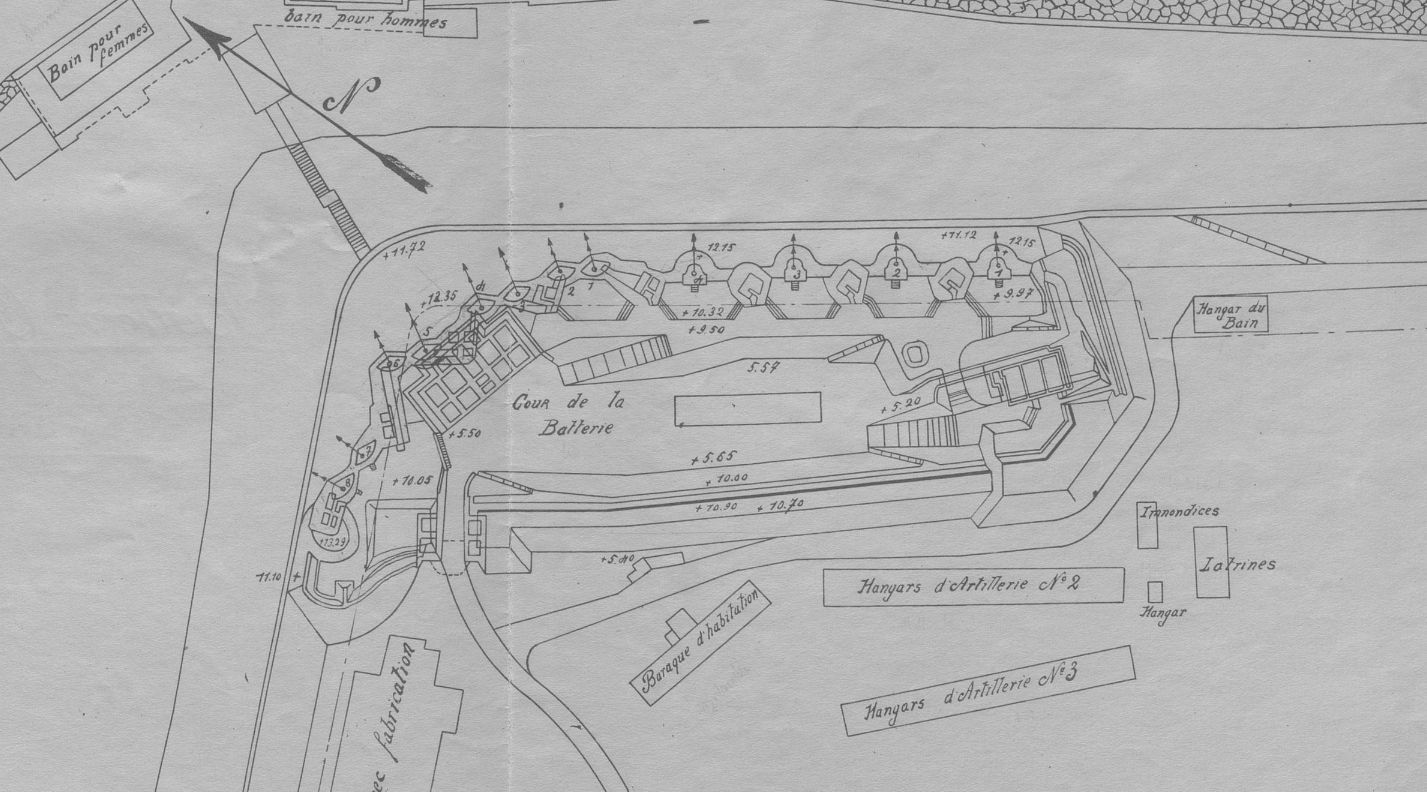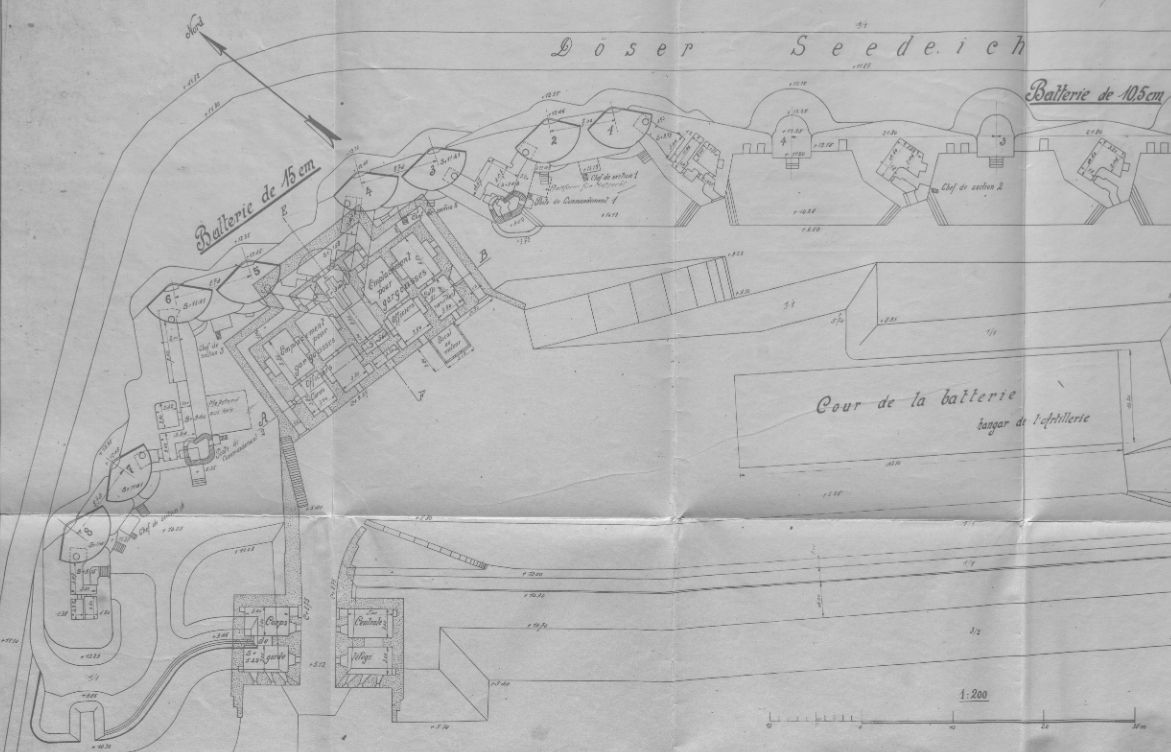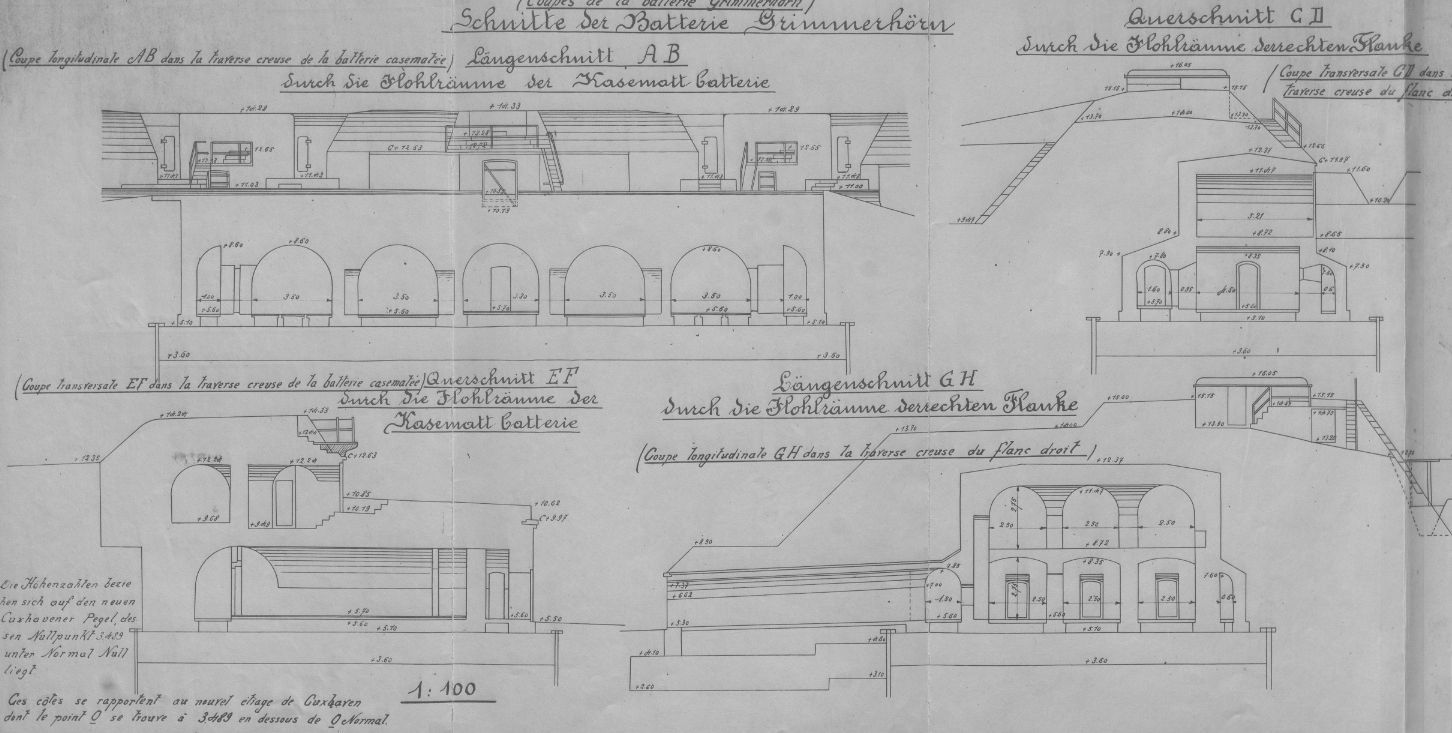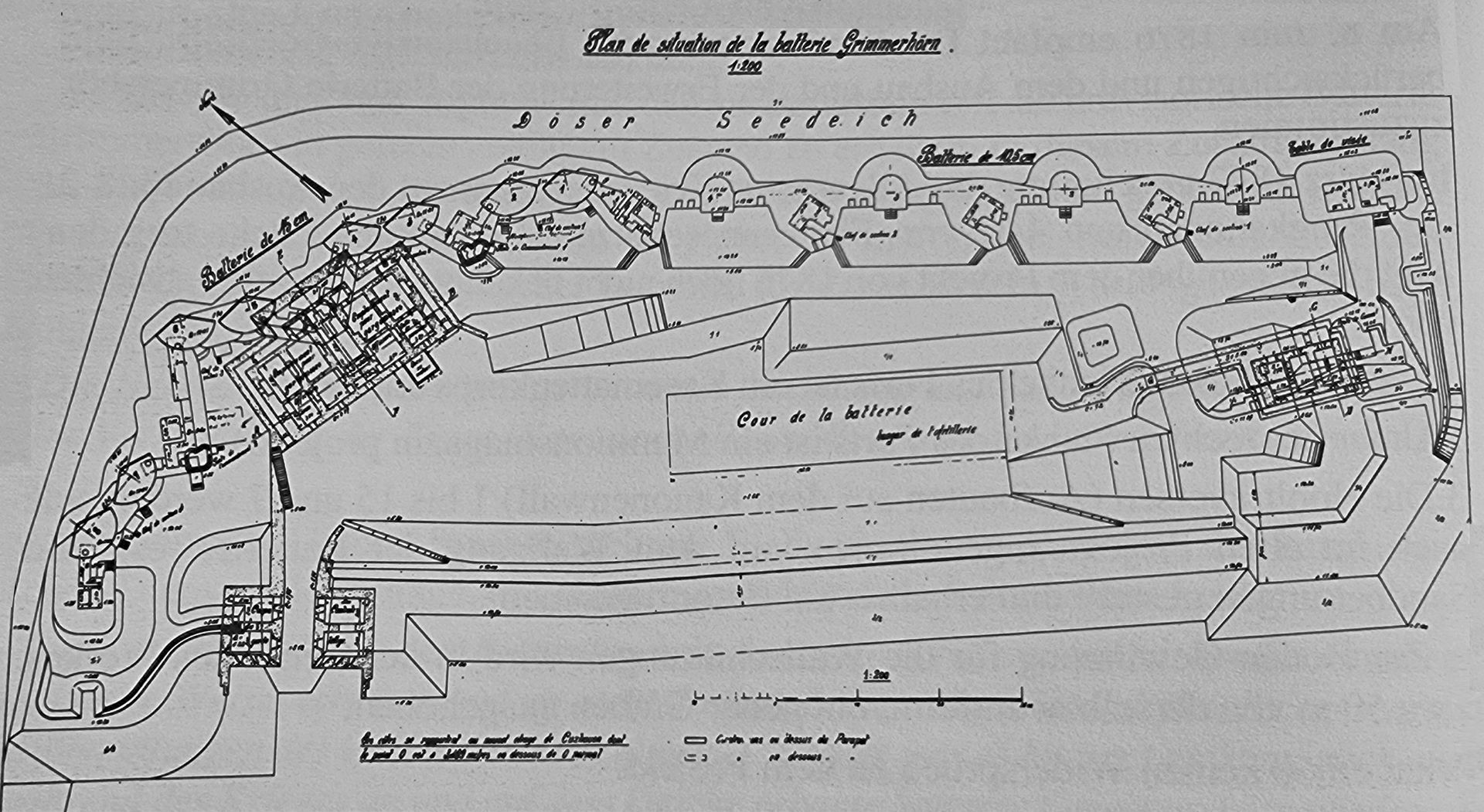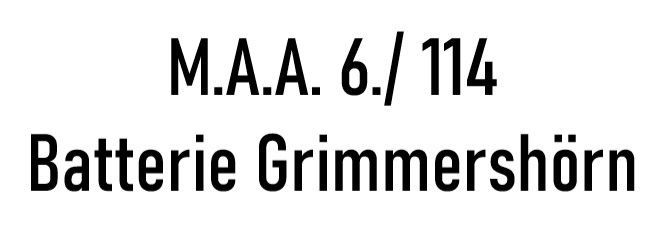
Fort Grimmerhörn was a defensive structure at the eastern end of the dike of Grimmershörn Bay. It was one of three forts built in Cuxhaven from 1872 onwards. Construction began on 18 June 1872, but construction work was stopped in January 1873 and did not resume until 1876. From 1888 onwards, two companies of naval artillery were relocated from Wilhelmshaven to "Fort Grimmerhörn". According to the district administrator Dr Werner, this position was occupied by 5 officers and 268 men.
Fort Grimmershörn was tasked with providing artillery support to Fort Kugelbake. Until the end of the First World War, the armament consisted of four 15 cm rapid-fire cannons and four additional 10.5 cm guns.
Some map extracts from a French dossier on the fortifications in Cuxhaven from 1927. These show top views and cross sections of the "Fort Grimmershörn" with the "Marine Cannon Battery"
The Grimmershörn Fortress was a semi-open field redoubt, the main front of which ran parallel to the dyke. Its entrance was an open cut in the valley wall with a full and lattice gate. The dimensions of the structure were 175 m long along the front, 82 m deep along the left flank and 60 m deep along the right flank. The left flank and the left part of the front bedding were designed for medium-caliber guns in ship casemates. The hollow shoulder defenses served as projectile and cartridge rooms and to accommodate the ammunition conveyor systems. Open platoon commander's positions were located between each two casemates, and two further splinter-proof commander's positions were in the middle of the battery on the hollow shoulder defenses. The valley wall of the fort was expanded to provide infantry defense against attacks. In the redoubt there were corresponding hollow spaces under the main wall and at the left shoulder point. There were three guard and standby rooms, 4 storeys and cartridge rooms, an engine room and an accumulator room. The telephone exchange was located in the left gate casemate, and the telegraph room and switching center of the battery were in the right gate casemate.
During the Second World War, the old "Fort Grimmershörn" continued to be used for coastal defense against enemy ship attacks. It was armed with four quick-loading cannons model 10.5 cm SK/C 32 U, as used on German submarines, and there was also a light infantry gun 7.62 IKH 290. To protect against approaching low-flying aircraft, there was at least one 2 cm Flak 29 Oerlikon on a pedestal mount 40.
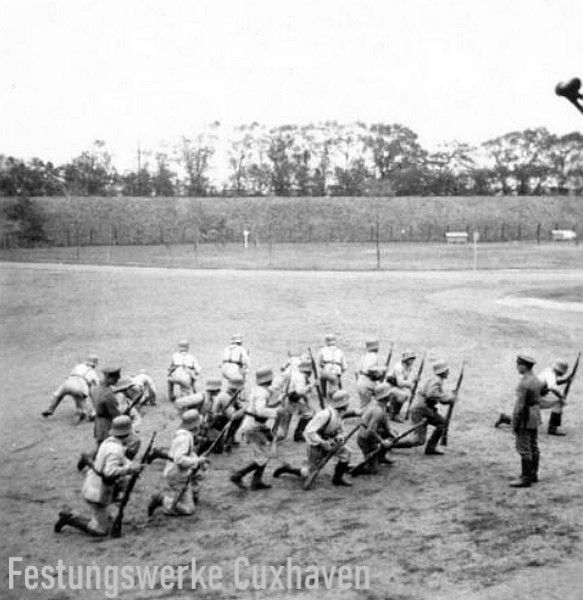
Drilling in the battery yard
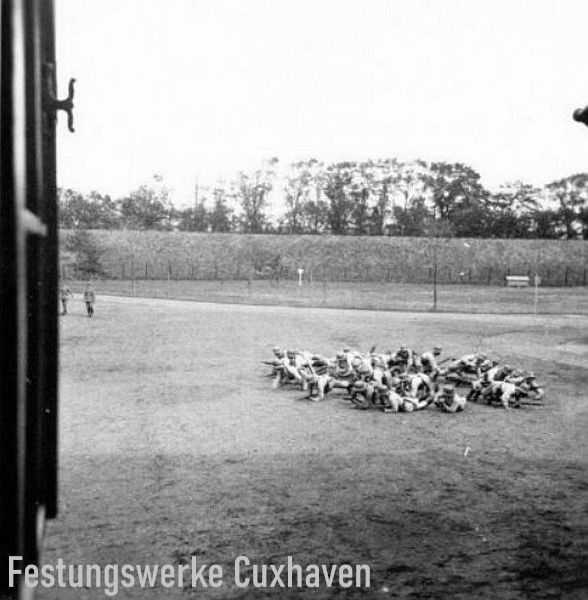
Drilling in the battery yard
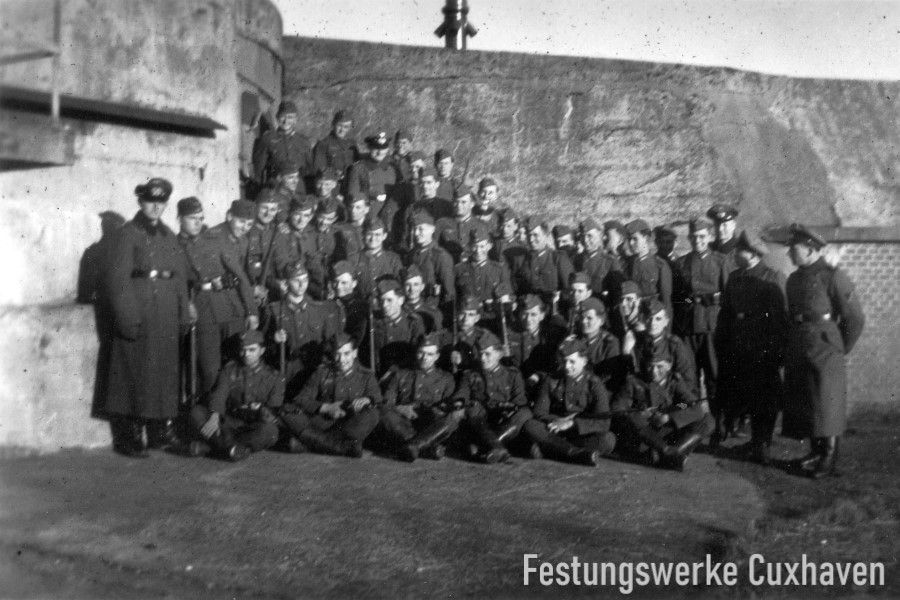
Marines in the Grimmershörn Fortress 1940
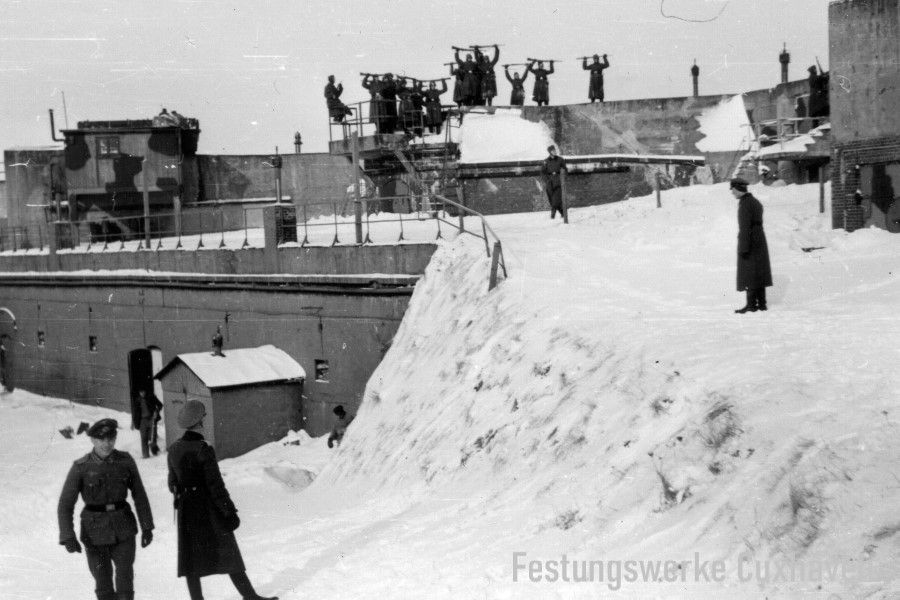
Marines in the Grimmershörn Fortress 1940
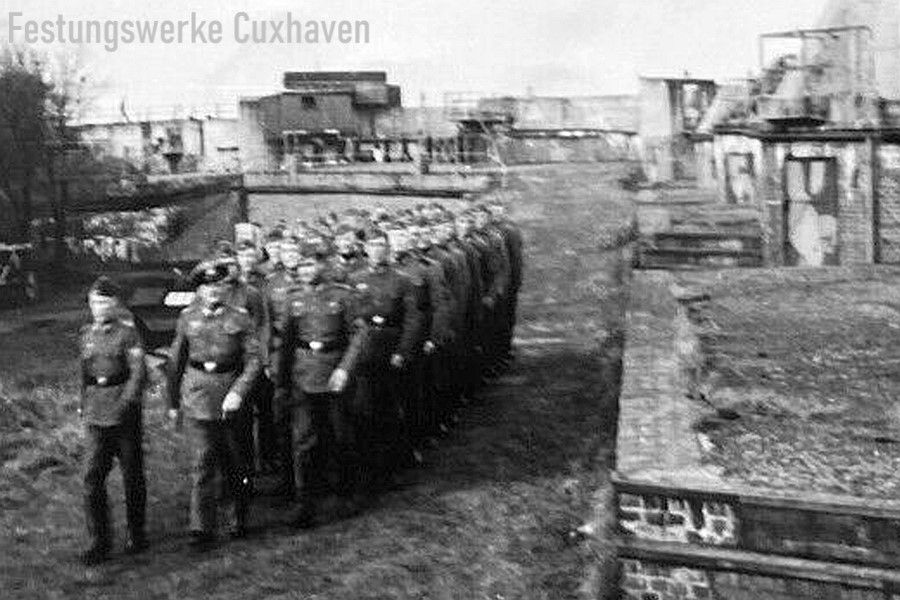
Marschierende Soldaten über der oberen Kasematte.
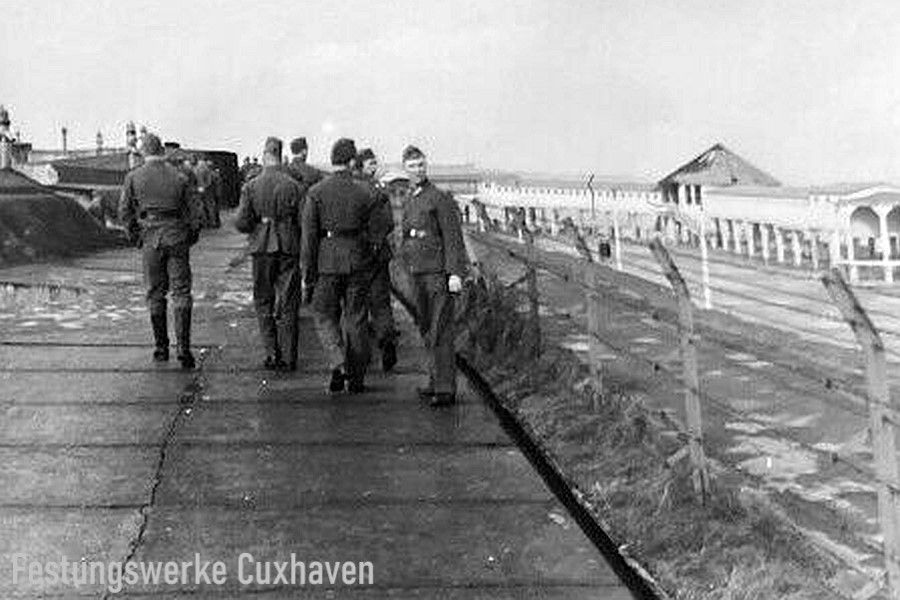
The sea side of today's ferry port with the security fence. Below is the Grimmershörn seaside resort.
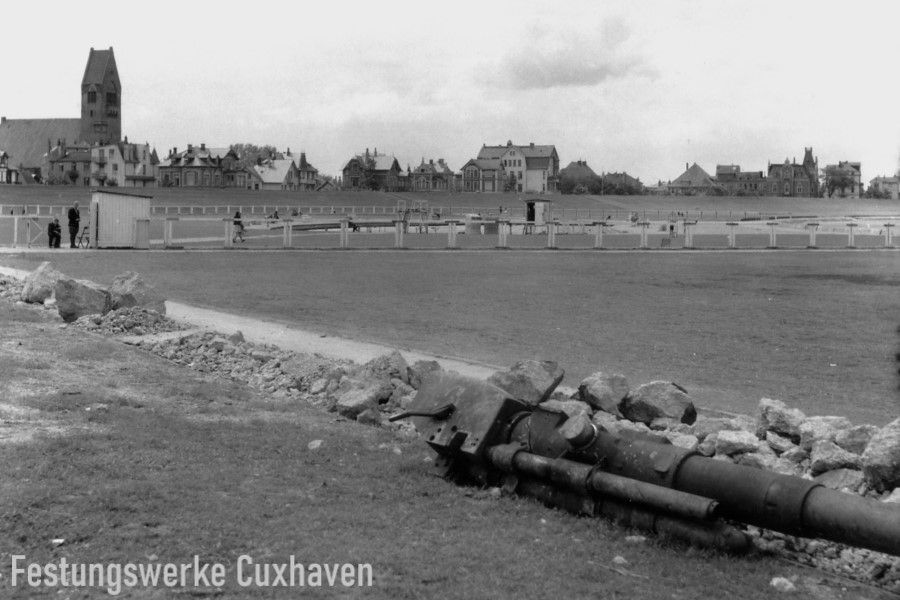
A gun barrel from the blown-up facility at the foot of the dike.Source: Zachary
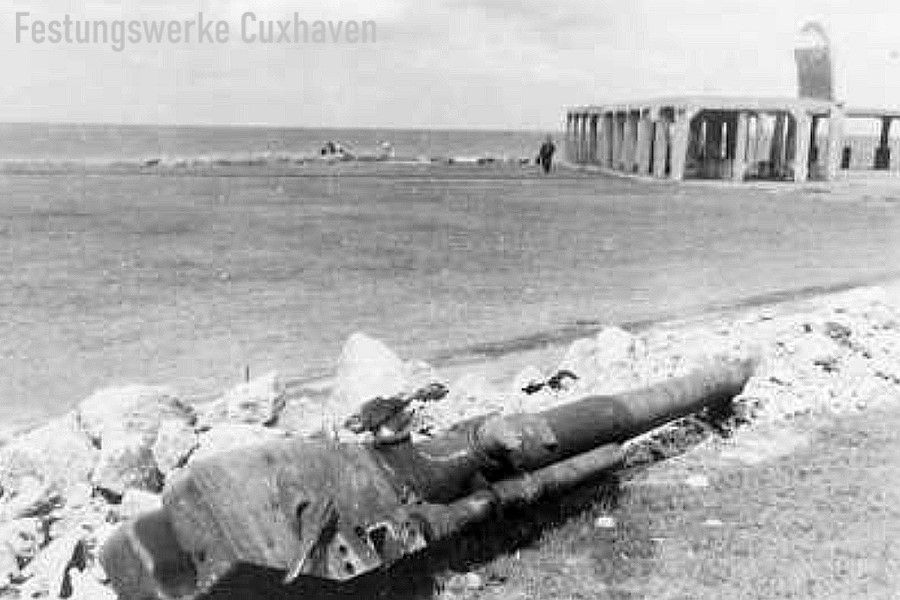
The same gun barrel from a different view.Source: Zachary
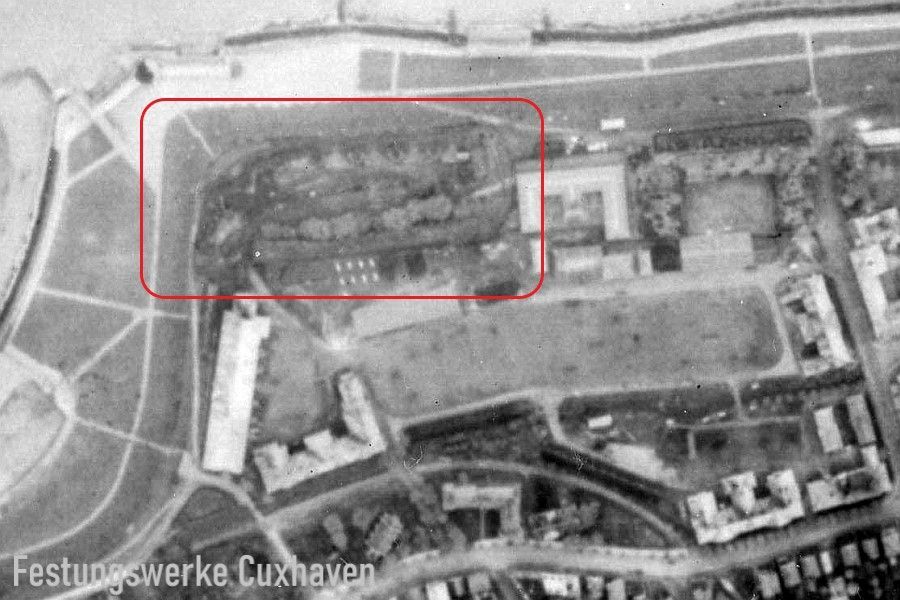
Allied aerial photograph of "Fort Grimmershörn" during the heavy American air raid on the city of Cuxhaven on June 11, 1943.
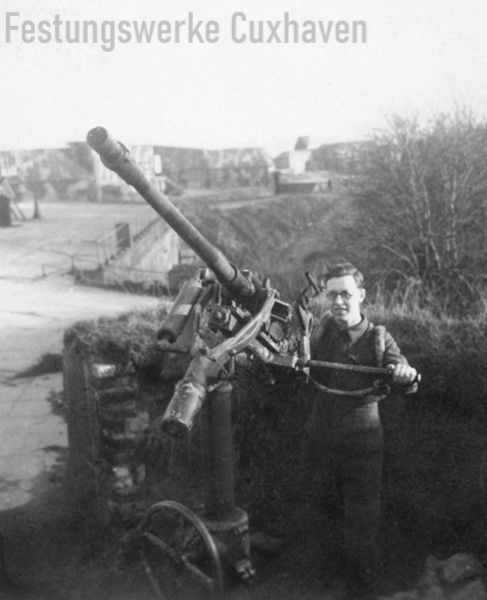
Ein britischer Soldat Robert
Albert Lewis Jones (Bob) nach Kriegsende an einer
2 cm Flak 29 Oerlikon au Sockellafette 40 im "Fort Grimmershörn".
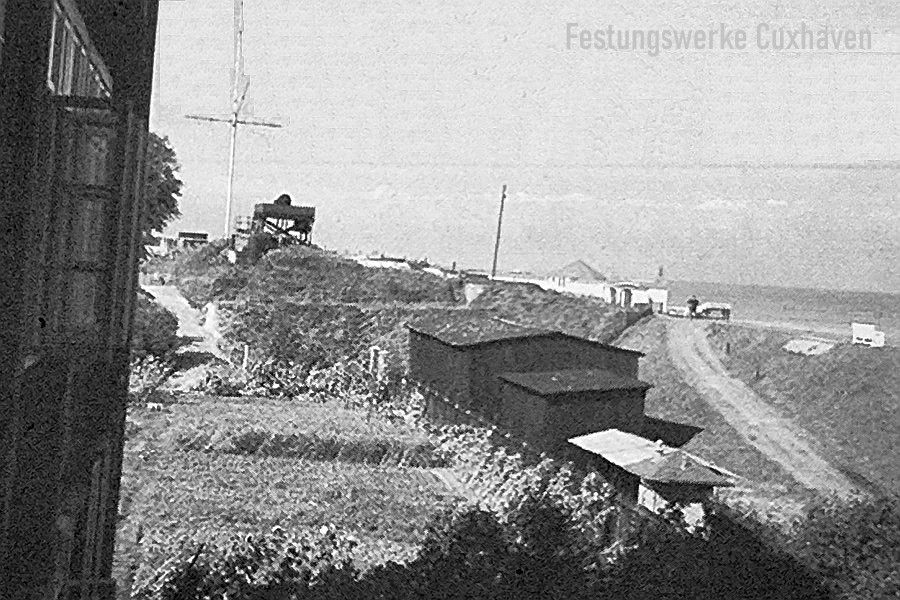
Fort Grimmershörn photographed from the east, on the high stand of the 150 cm anti-aircraft searchlight.Photo: Private
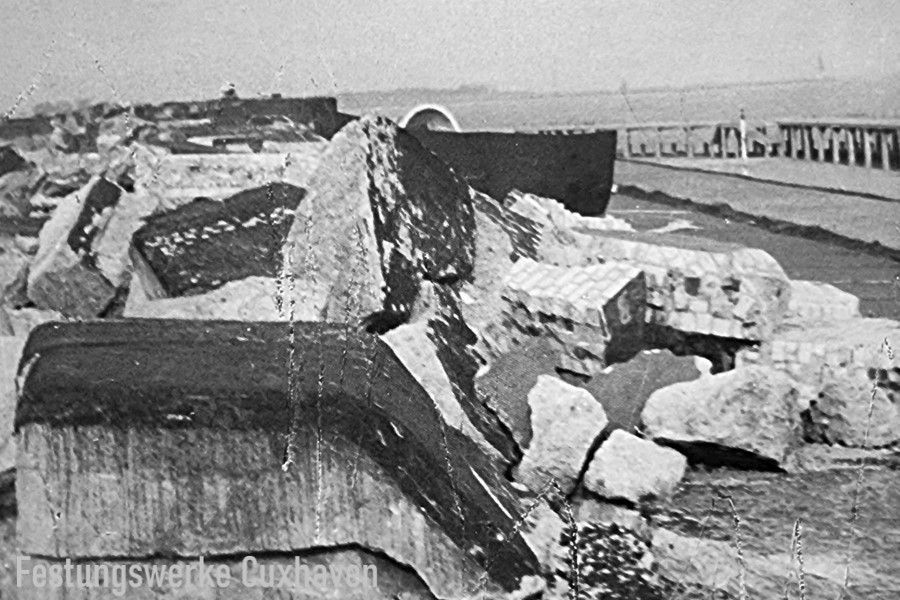
The blown up remains of "Fort Grimmershörn" in 1949.
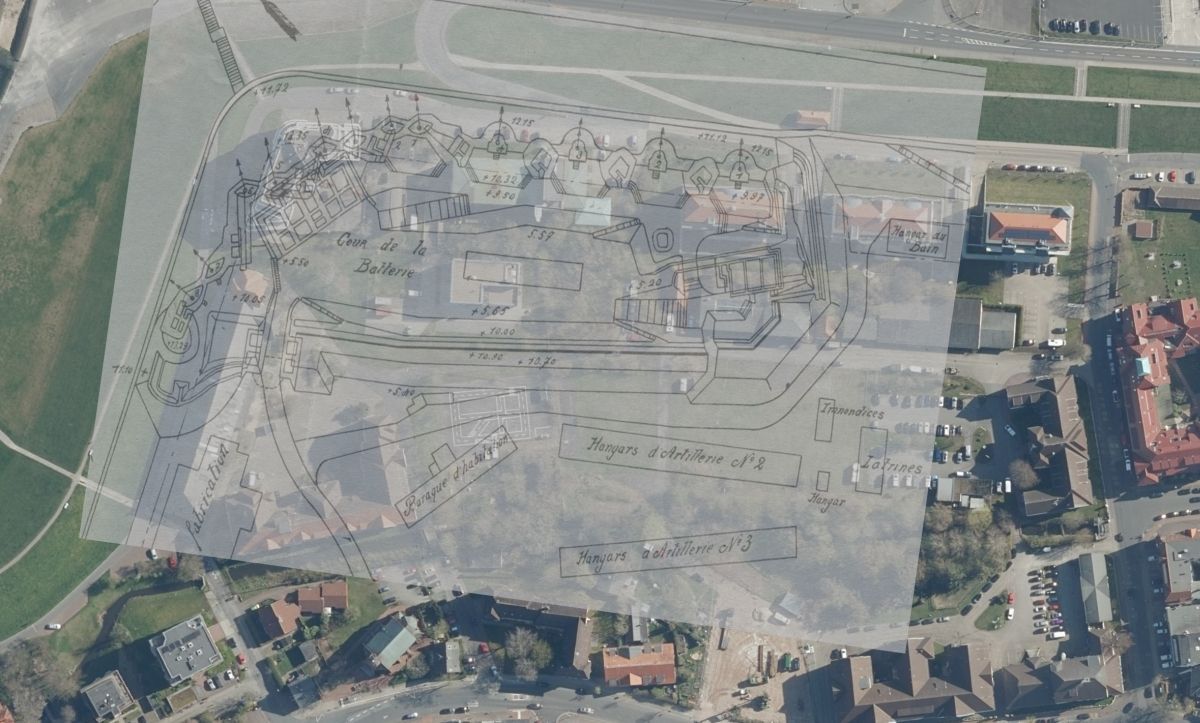
The plan of "Fort Grimmershörn" from 1927 over an aerial photograph from 202.
Quellen: M.B., Gerd Wildfang,



